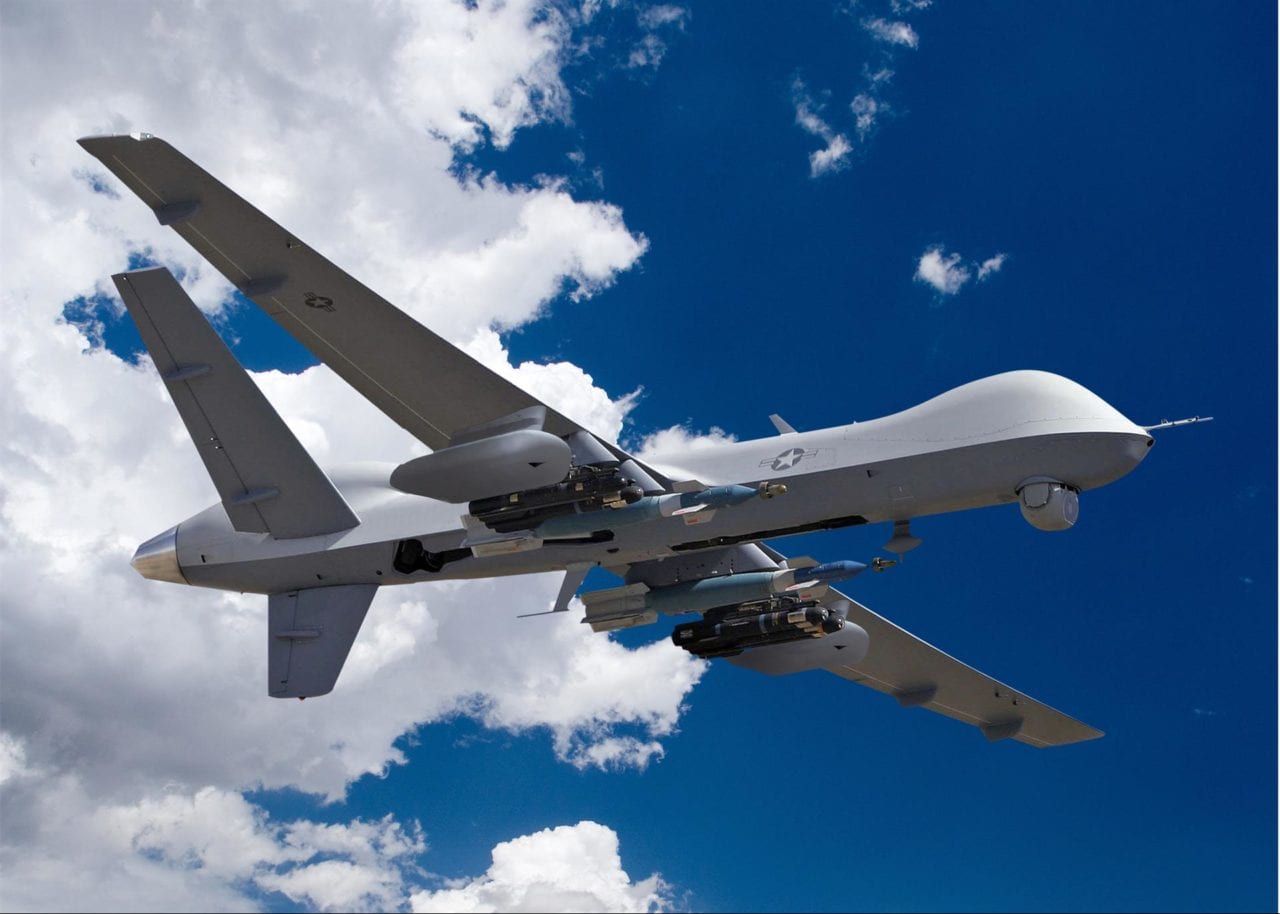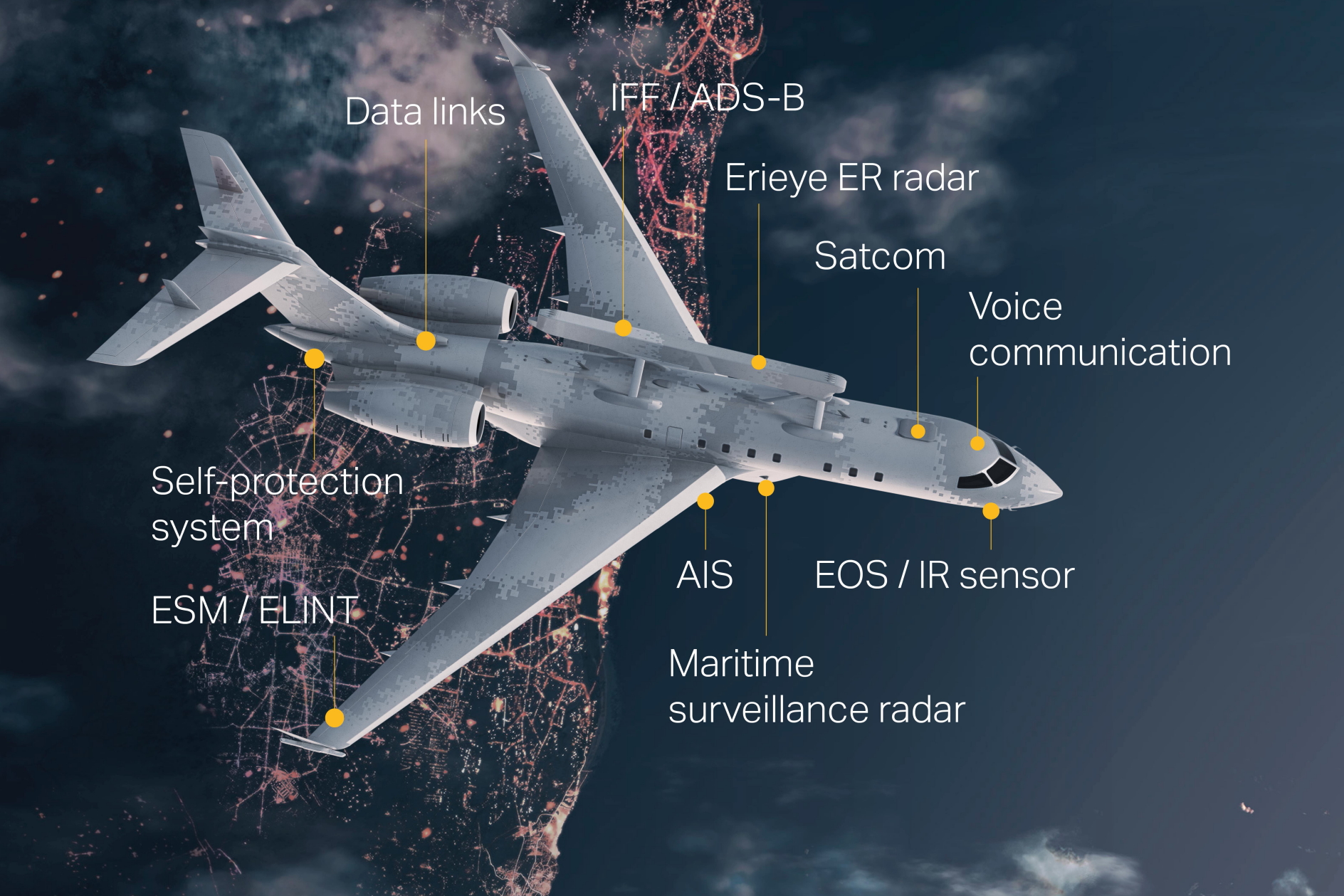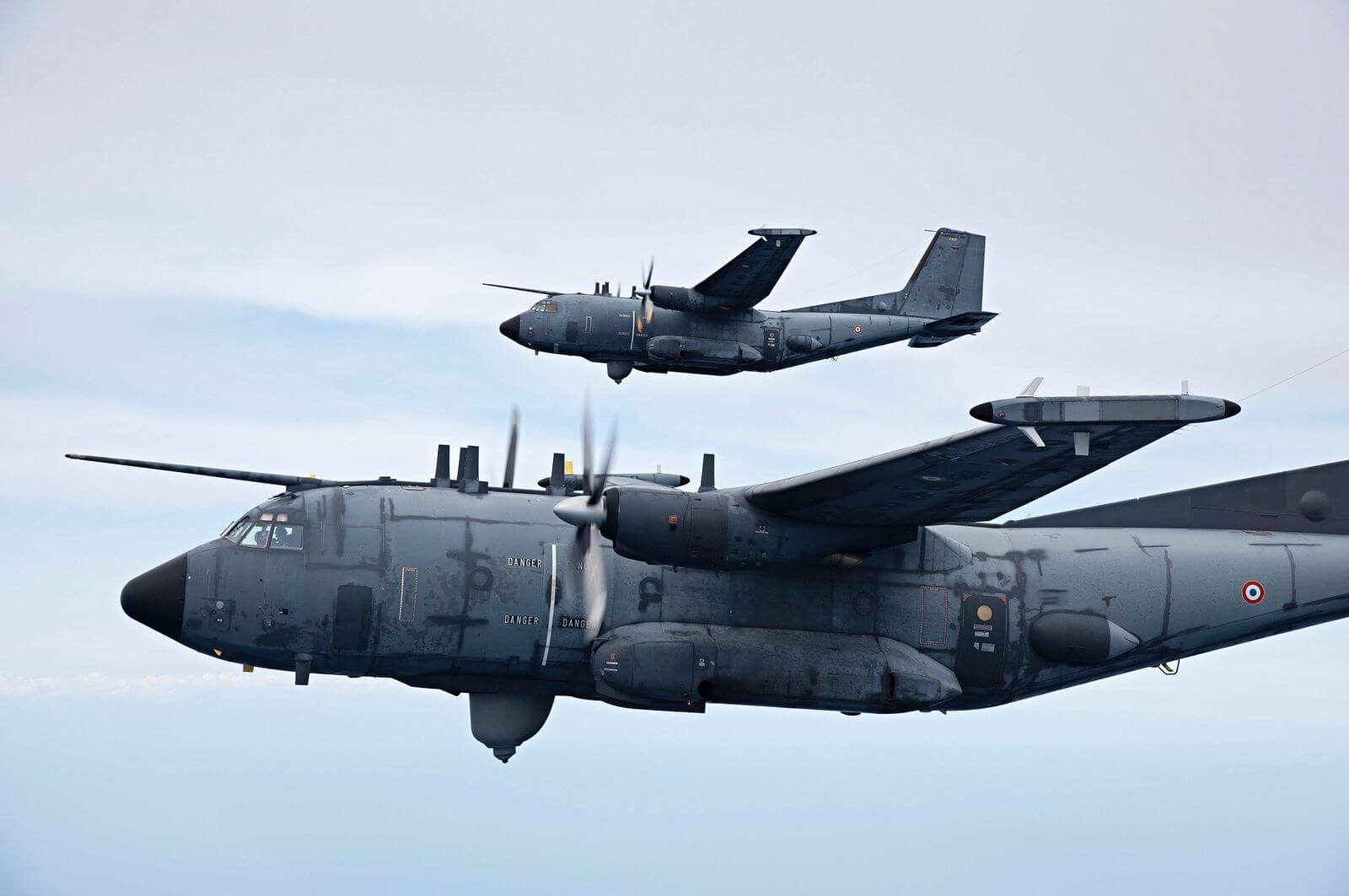Elint Aircraft - A surveillance aircraft is an aircraft used for surveillance. They are used by military forces and other government agencies in roles such as intelligence gathering, battlefield surveillance, aerial surveillance, reconnaissance, reconnaissance (eg weapons detection), border surveillance and fisheries protection. This article focuses on aircraft used in these roles, rather than traffic surveillance, law enforcement and similar duties.
Surveillance aircraft typically carry no weapons, or limited deterrent weapons. They do not always require high-performance capabilities or privacy features, and can be modified by conventional aircraft. Surveillance aircraft have also included tethered balloons (eg, TARS) and unmanned aerial vehicles (UAVs).
Elint Aircraft

The name of the global hawk family of the US. it. DoD - RQ-4 - may believe the original designation of Block 40. "R" is the Patagonia designation for recovery, .... but the original designation ... is surveillance, not tracking. ... Exploration operations are generally intended for long-term intelligence-gathering purposes. The surveillance function is very important in the execution chain, with tactical operations providing a short-term decision-making process.[1]
Raytheon Develops Elint Radar Detection System Capable Of Detecting Radar Emissions On The Ground
For surveillance, it is important that the collection system, the target, and the decision maker communicate in such a way that AMI actions are communicated in real time to decision makers. to oppose Amy's actions.[2]
The terms "surveillance" and "reconnaissance" are sometimes used interchangeably, but, in the military context, a distinction can be made between surveillance, which monitors a changing situation in real time, and reconnaissance, which captures a static image for analysis.
In 1794, during the Battle of Fleur, the balloon of the French Aerostatic Corps L'Treprent remained afloat for nine hours. The French police used a balloon to watch the movement of the Austrian army, dropped notes on the ground to be collected by the French army,
One of the first aircraft used for surveillance was the Rumpler Taube during World War I, where Fred Zin pioneered new methods of reconnaissance and photography. The aircraft's flexible wings make it very difficult for ground-based observers to see the Taube at altitudes above 400 meters. Perch also called the plane "the invisible plane", and it is sometimes called "the first plane around the world". German Taube planes could see the increased Russian army in the Battle of Tannenberg (1914).
Mind The Gap
During World War II, light aircraft such as the Auster were used as aerial observation posts. British Royal Artillery officers are trained as pilots to fly AOP planes to locate artillery.
The aerial observation role was generally taken over by light observation helicopters, such as the Hughes OH-6 Cayuse, from the mid-1960s.
Before the war, the British saw the need for an aircraft that could remotely track and spot enemy ships. Of these designs the low-flying Airspeed Fleet Shadower and the General Aircraft Fleet Shadower were built and flown in 1940 but were rendered obsolete by the introduction of airborne radar.

Spy planes were a source of great conflict between the United States and the Soviet Union in the 1960s.
Tokyo Inducts Rc 2 For Elint Missions
Naval surveillance aircraft are typically large, slow-moving machines that can fly continuously for hours, with a wide range of missions. Such aircraft include the Hawker-Sideley Nimrod, Breguet Atlantic, Tupolev Tu-95, Lockheed P-2 Neptune and Lockheed P-3 Orion/CP-140 Aurora. From the First World War to the Second World War, small ship-launching seaplanes were used.
Unmanned aerial vehicle (UAV) surveillance aircraft are "in use or under development in many countries, including Israel, the UK, the United States, Canada, China, India, South Africa and Pakistan."
Drones are increasingly used in conservation work to complete tasks such as mapping forest cover, tracking wildlife and enforcing environmental laws by catching loggers or poachers.
Some countries are adopting aircraft to meet electronic intelligence (ELIT). The Beech RC-12 Super King Air and the Boeing RC-135 Rivet Joint are examples of this work.
Raf Deploys £211m 'spy Plane' That Can 'soak Up' Radar On Mission 'deep Into Black Sea'
With minimal equipment, a long-range business jet can be converted into a surveillance aircraft to perform special missions cost-effectively, from low-level surveillance to maritime surveillance:
This article needs more citations for validation. Please help improve this article by adding citations from reliable sources. Things that don't work can be challenged and removed. Find sources: “Surveillance aircraft” – News · Newspapers · Books · Scholars · JSTOR (May 2015) (Learn how and when to remove this sample message) Signals intelligence (SIGINT) is the general term for interception of signals. It has two main components - Communications Intelligence (COMINT) and Electronic Signals Intelligence (ELINT).
As its designation suggests, COMINT involves the consideration and analysis of communications between organizations, military units, and individuals. A subset of COMINT is traffic analysis—a process that involves determining the flow of traffic between organizations, units, and individuals, and the amount of traffic involved. Traffic analysis is still useful even if the signals it reads are encrypted and cannot be deciphered.

ELINT stands for intelligence gathering through interception and non-communication signals research. This includes transmission of radar systems, missile guidance systems and IFF detectors and transponders. ELINT functions will intercept such signals, and will attempt to determine the power, operating procedures, and hardware locations from which they originate.
Breguet 1150/elint Atlantic
Weapon system sensors are becoming more sophisticated, with higher resolution, increased data rates, and more complex data. Signal density is increasing, along with a growing number of commercial applications using frequencies similar to those for military applications. SIGINT and COMINT software must be able to cope with these changes.
They must be able to deal with immediate threats, while low probability of intercept (LPI) radars using techniques such as frequency-modulated continuous wave (FMCW) pose problems for older ELINT receivers. These may have difficulty finding, analyzing and identifying such symptoms.
However, given the long service life of many military equipment - the S-75 DVINA (SA-2 GUIDELINE surface-to-air missile entered service in 1957, but is still in service with about 20 users - SIGINT systems must also face This obsolescence in cases, the weapons are upgraded, so they may have a different electronic signature than the original variant.
Military Prophet system - seen here in vehicle mounted form - covers the HF, VHF and UHF bands. (Photo: General Dynamics Mission Systems)
Uae's Advanced Intelligence Aircraft Begins Operational Testing
At the same time, SIGINT receivers must also be able to handle the high signal density created by the ever-increasing number of emitters, and cover ever-higher frequencies, including the millimeter wave bands. Therefore, while older threats may be effective, older ELINT receivers may have reduced usability.
For larger forces, the classic SIGINT aircraft platform is often based on long-range transport aircraft. The best known example is probably the USAF version of the RC-135V/W RIVET JOINT for the Boeing RC-135.
The UK's fleet of three NIMROD R.1 SIGINT aircraft was decommissioned in 2011, and the resulting gap was filled until 2017 when the Royal Air Force received the first of three based on the RC-135W and known as the AIRSEEKER R. . 1. The Royal Air Force also operates an eight-seat version of the SHADOW R.1, surveillance, target acquisition and intelligence (ISTAR) Beechcraft KING AIR 350 aircraft. Last year, the UK MoD awarded Leonardo and Thales contracts to provide DAS integrated that knows. To protect the aircraft from IR-directed threats.

The US (Photo: US Army)
Russia's 'flying Radar': Next Gen A 100 Awacs Plane Makes Debut Flight With Its Surveillance Equipment Turned On
First flown in 1958, the Ilyushin Il-20M COOT-A SIGINT aircraft is a military version of the Il-18 turboprop-powered aircraft. A batch of 20 was created, and the brand is still active in Russia. The aircraft is reported to conduct the ROMB 4 SIGINT program and the VISHNAYA COMINT program.
First shown at the MAKS air show in 2013, the Tupolev Tu-214R is intended to replace the Il-20M. It carries the MRC-411 multi-intelligence system, which includes SIGINT sensors, side-looking synthetic aperture radar (SAR), and multi-spectral electro-optical systems.
In 2004, France chose to retire its two system airport de recoil d'informations de guerre électronique (Sarigu) Sigint aircraft. Based on the DC-8 aircraft, it carried a sensor suite developed by what was then Thompson-CSF. The avionics development by Thales was reportedly over budget and had a weight problem, factors that may have contributed to the decision to cancel the flight. With the end of the Sarigue program, the only French ELINT aircraft are two older versions of the C-160G GABRIEL SIGINT TRANSALL transport. Both are expected to retire in 2025.
Like several other countries, France saw the need to install a next-generation SIGINT aircraft based on a thin airframe - a move made possible by the reduction in size and weight in modern electronic equipment, and the capability of high-speed data links that Would allow SIGINT experts to sit on the ground rather than being carried on board. In 2018, the French MOD ordered Dassault Aviation to supply three FALCON business jets equipped with Capacité Universelle de Guerre Électronique (Universal Electronic Warfare Capacity) SIGINT systems developed by Thales.
The Army Lays Out Plans For Its New Intelligence Gathering Jet
The Russian Ilyushin Il-20M COOT-A is captured over the Baltic in June 2020. (Image: UK MoD Crown copyright)
In July 2020, Germany announced that it will purchase three Bombardier GLOBAL 6000 aircraft that will be equipped with Integrated Signal Intelligence.
Aircraft appraisal online, free aircraft appraisal, aircraft appraisal services, aircraft appraisal cost, aircraft appraisal jobs, aircraft appraisal course, aircraft appraisal training, business appraisal, rolex appraisal, appraisal software, 409a appraisal, aircraft appraisal report
Post A Comment:
0 comments so far,add yours